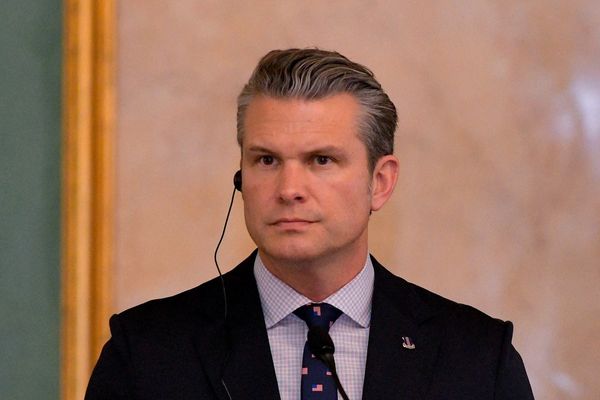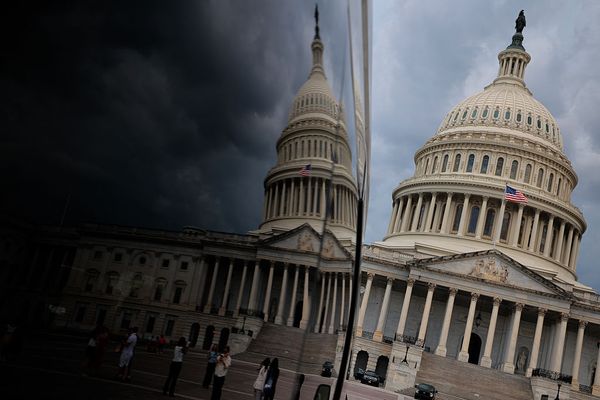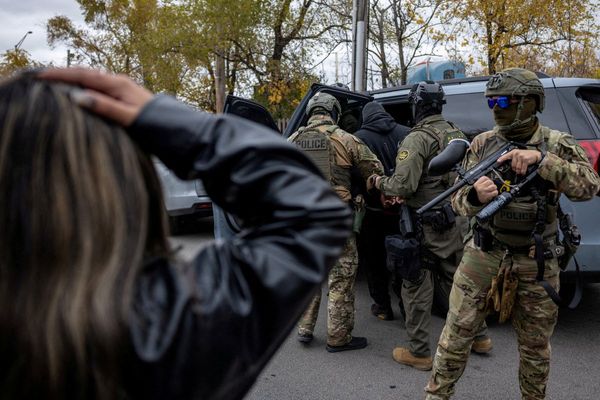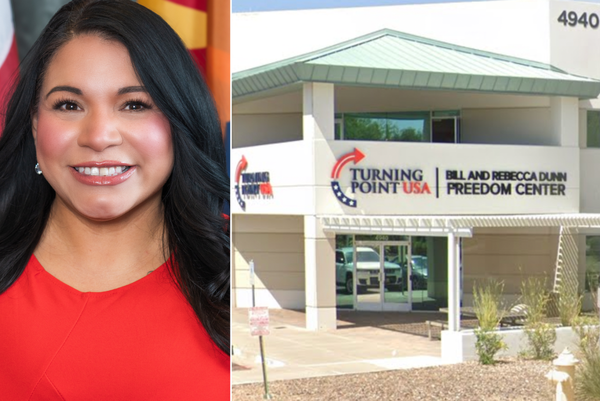
Dylan Hockley loved the color purple. He used to come home from school showing off pieces of paper where he’d drawn big purple dots. He loved looking at the moon and seeing a flash of lightning, although he couldn’t stand the sound of thunder. He adored his older brother, Jake, and he liked being held close to his mother – like a koala, she said.
“He was definitely the center of our family and just pure, unadulterated love and joy,” said Dylan’s mother, Nicole Hockley.
Daniel Barden was one of Dylan’s first-grade classmates, and his family called him “the caretaker of all living things”. He would pick up carpenter ants that made their way into the house and gently carry them outside so they could be with their friends. On the last day of his life, he noticed the rising sun casting a glow on his family’s Christmas tree.
“I just thought it’s so beautiful that he thinks like that, that he notices those things and appreciates them,” said Daniel’s father, Mark Barden. “I went and got the camera and took a picture of it. So, I have that picture from that Friday morning – December 14, 2012.”
Dylan and Daniel died together that day, after a shooter entered their classroom at Sandy Hook elementary school in Connecticut. With an AR-15 assault rifle and multiple other guns, the attacker killed six adults and 20 six- and seven-year-old children, including Dylan and Daniel.
Dylan’s first-grade teacher, Vicki Soto, and his classroom aide, Anne Marie Murphy, were among the educators killed. When police officers entered Sandy Hook elementary after the shooting, they found Murphy holding Dylan’s body in her arms. Soto was shot multiple times after throwing herself between the gunman and her students.
“He loved his teacher,” Hockley said. “His teacher died with him that day.”
Wednesday marks 10 years since the tragedy that devastated Sandy Hook, the village community that is part of the larger town of Newtown, and sent shock waves around the world. In the decade since, a reinvigorated movement aimed at ending gun violence has spread across the country, and Hockley and Barden have dedicated their lives to preventing losses like theirs.
“I will continue to have to adjust to the fact that Daniel’s gone forever for the rest of my life,” Barden said. “I don’t think I ever will, nor should I ever have to wrap my head around this, nor should anyone … [That’s] why we do the work we do at Sandy Hook Promise.”
Hockley and Barden spoke to the Guardian for a special edition of the Politics Weekly America podcast, giving interviews at the office of Sandy Hook Promise, the non-profit they co-founded after the tragedy. The group has devised violence intervention programs now used in many school districts across the nation to teach children to recognize the potential warning signs that so often precede a person becoming a mass shooter.
Sandy Hook Promise also advocates for policy changes to reduce gun violence in the US, playing a role in the negotiations over the Bipartisan Safer Communities Act this past summer. The bill’s passage marked the first time in nearly 30 years that the US enacted such a sweeping gun law. Although it didn’t include all of activists’ demands, the bill expanded certain background checks, and increased funding for mental health and violence intervention programs.
Joe Biden signed the bill just weeks after a tragedy all too similar to Sandy Hook unfolded in Uvalde, Texas. A gunman entered Robb elementary school and fatally shot 19 children and two educators.
“Every shooting takes me back, and it probably always will. That day hurt more than most because it was such young children again,” Hockley said. “Just knowing how this was going to affect so many families and that community – that was really hard.”
Sandy Hook Promise and their allies on Capitol Hill then stepped up their demands for legislation. Biden was urged to “do something” by onlookers when he visited Uvalde, just weeks after a racist massacre at a supermarket in Buffalo, New York.
Senator Chris Murphy of Connecticut worked with fellow Democrat Kyrsten Sinema of Arizona and two Republicans, Thom Tillis of North Carolina and John Cornyn of Texas, to craft the compromise bill.
Murphy, who became a vocal advocate for gun safety after Sandy Hook, touted the bill’s passage as a sign of strength for the movement.

“For most of the decade before Sandy Hook, the gun lobby got whatever they wanted,” Murphy told the Guardian. “For the 10 years after Sandy Hook, it was slow progress on behalf of the gun safety movement, but it was largely just gridlock … This summer, we showed that we now are more powerful.”
But advocates agree more action is still needed. In the past month alone, the US saw deadly attacks at an LGBTQ nightclub in Colorado , at a Walmart in Virginia and at the University of Virginia.
Activists are now strengthening their cries for a ban on assault weapons. Po Murray founded the gun safety group Newtown Action Alliance after her neighbor was identified as the Sandy Hook shooter, and she believes a ban on military-style assault rifles is critical.
“We know first-hand what an assault weapon can do,” Murray said. “Assault weapons are designed to kill as many people [as possible] in a fraction of time.”
Although such a bill passed the House earlier this year, it has stalled in the Senate. With Republicans taking control of the House in January, it will probably be extremely difficult to advance the policy.
Despite the many hurdles she has encountered in her advocacy work, Murray takes heart in the work done by the youngest members of the gun safety movement.
The 2018 shooting at Marjory Stoneman Douglas high school in Parkland, Florida, mobilized a new generation of activists to fight against gun violence, resulting in the creation of the group March for Our Lives. Last month, a member of March for Our Lives, Maxwell Frost, became the first member of generation Z ever elected to Congress.
“Those young people want to see significant changes,” Murray said. “They are unapologetic about what they want, and they’re going to get it because they will organize on this issue.”
Some of that organizing is happening within the youth wing of Murray’s group, the Junior Newtown Action Alliance. One Saturday, JNAA members helped manage a gun buyback event at the Newtown police department, where participants had the opportunity to pick up free gun safes and turn in firearms in exchange for gift cards.
Geneva Wharf, 16, said she joined the group because she wants to help bring about the change that feels so overdue.
“After seeing what mass shootings have done to communities and losing friends, it’s just really hard to see that nothing has really happened, and you still see these shootings all over the country,” Wharf said.
Michayl Wilford, a 13-year-old JNAA member, expressed similar dismay about the many reforms still needed 10 years after Sandy Hook. Wilford’s brother survived the shooting.
“Every year when the time comes around, it’s just like it kind of hits you again,” Wilford said. “He just kind of thinks about what could have gone wrong [for him] that day and how it could still happen today because nothing has changed.”
For Barden and Hockley, memories of Daniel and Dylan are never far away. As the two parents travel across the country advocating for reform, they make a point to remind policymakers of just how much they lost 10 years ago.
“When we were going to visit with legislators, either here in Connecticut or in other states or in Washington, I wanted them to see Daniel’s face,” Barden said. “I wanted them to know what’s at stake. I wanted them to know, this is not just numbers and statistics and metrics. These are real people.”
The memories of Daniel and Dylan have moved others to action as well. After the 2016 shooting at the Pulse nightclub in Orlando, Florida, Murphy staged a 15-hour filibuster on the Senate floor to demand action on gun safety. As he gave his closing remarks, Murphy displayed a large photo of Dylan, smiling into a camera and wearing a Superman T-shirt. The picture became a symbol of the need to change US gun laws.

“When people look at that photo, how can you not see such a gorgeous person that was taken from us for all the wrong reasons?” Hockley said.
When Hockley looks at the photo, she sees her beautiful child who never had the chance to become an adult, and she remembers everything she has to fight for.
“He is my hero. He is my superhero. And that’s why it’s my life’s mission to honor him,” she said. “Honor my son that was killed, honor my son that survived and figure out a way forward so that kids can keep having those happy photos.”







